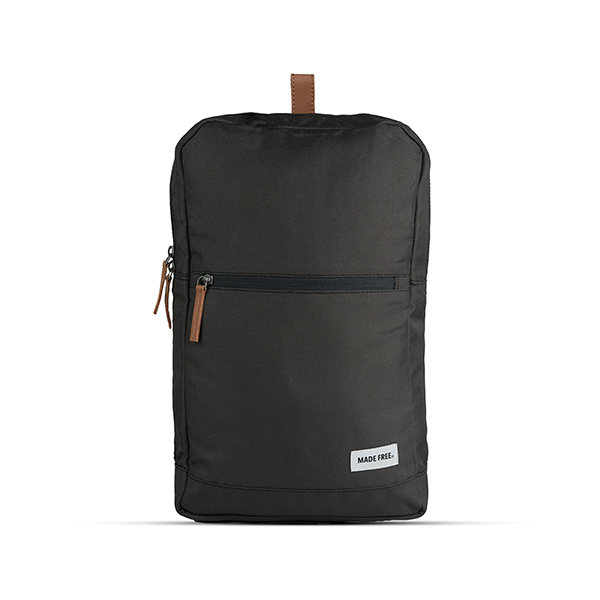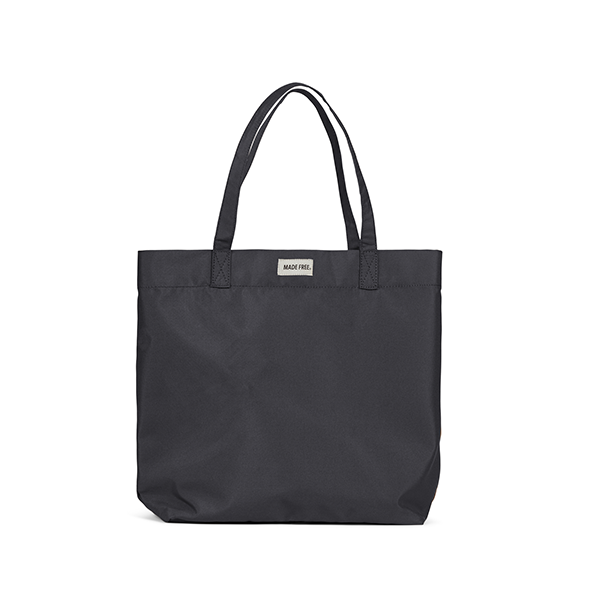
When we hear the word sustainable, our minds often jump to materials—organic cotton, recycled plastic, maybe even biodegradable leather. And yes, those are important. But when it comes to truly sustainable fashion, that’s just the beginning.
So what is a sustainable bag, really?
The most responsible choices in fashion aren’t just about what a product is made of. They’re about how it’s made, who made it, and why it exists in the first place. If you’re looking to shop more ethically—and invest in bags that actually make a difference—this guide breaks down exactly what to look for.
Beyond the Fabric: What Sustainability Really Means
 Pictured: The MADE FREE Hip Pack – ethically made from recycled polyester.
Pictured: The MADE FREE Hip Pack – ethically made from recycled polyester.
A bag made from recycled materials sounds great on paper. But if the people making that bag are underpaid, working in unsafe factories, or subject to exploitation, can we really call it sustainable?
Many well-known brands tout eco-friendly materials while ignoring the human cost of their supply chain. At Made Free, we believe ethical labor is just as essential as environmental care, and you shouldn’t have to choose between the two.
The Human Side of Sustainability
Sustainability isn’t just an environmental issue. It’s a human one.
According to Walk Free, an estimated 49.6 million people are living in modern slavery today—many of them trapped in garment and textile industries that fuel fast fashion. Poor working conditions and minimal pay not only perpetuate poverty, but they also create the conditions for trafficking and exploitation to thrive.
Choosing fair trade bags—like those made at World Fair Trade Organization–certified facilities—helps disrupt this cycle. At Made Free, every purchase supports dignified, self-sustaining employment that protects workers’ rights and creates pathways to freedom.
A Holistic Approach to Sustainability

Pictured: MADE FREE Makers with the canvas Market Tote in fair trade certified factory.
So, how can you spot a truly sustainable bag? Look for brands that approach sustainability through every stage of a product’s life:
-
Ethical Labor: Are the artisans paid fair wages? Are factories safe and transparent?
-
Responsible Materials: Is the bag made from recycled, organic, or biodegradable materials?
-
Environmental Impact: Is water use minimized? Are emissions reduced?
-
Longevity + Circularity: Is the bag built to last? Can it be repaired or recycled?
These aren’t bonus features. They’re the basics of ethical fashion.
What to Look For When Shopping for a Sustainable Bag

Pictured: The MADE BY FREE WOMEN Market Tote.
Here are three non-negotiables when choosing your next go-to tote or backpack:
-
Certifications That Matter
Look for standards like WFTO, GOTS, Recycled, and Low-Profit Social Enterprise (L3C). These prove a company isn’t just talking the talk. -
Material Transparency
Choose bags made from 100% recycled plastic bottles, organic cotton, or vegetable-tanned leather. These materials are lower impact and more durable long term. -
Commitment to Craft
Sustainable bags should be designed to last. Reinforced handles, clean stitching, and timeless silhouettes all point to a bag that’s made with intention—not planned obsolescence.
Where Purpose Meets Practicality: The MADE FREE Model
Every bag at MADE FREE is handcrafted in India by artisans earning a fair wage and working in safe, dignified conditions. With each purchase, you help provide one day of freedom from human trafficking. Because sustainability isn’t just about reducing harm, it’s about creating opportunity.
Whether it’s the Urban Pack Mini, the Day Tote AW Large, or the bold MADE BY FREE WOMEN Market Tote, each bag carries a story that’s bigger than style alone.
Ready to carry with purpose?
Now that you know how to choose ethical fashion, take the next step. Explore a collection of fair trade bags that blend sustainability, functionality, and timeless design.






0 comments